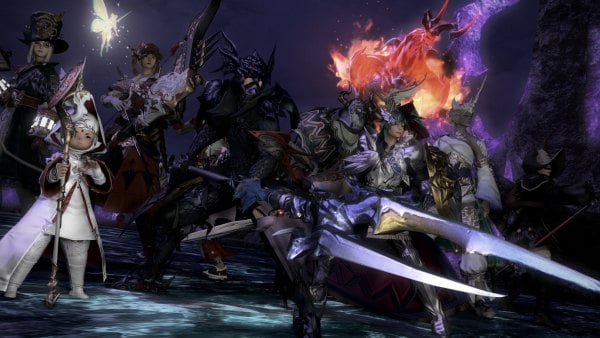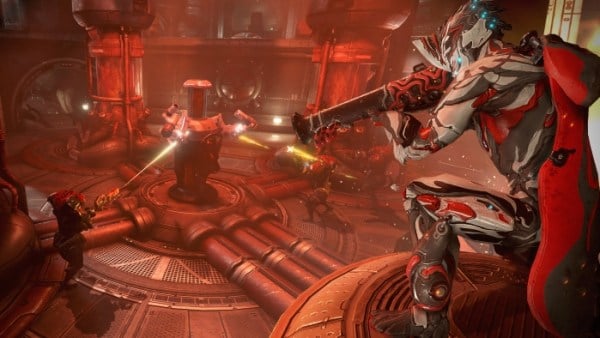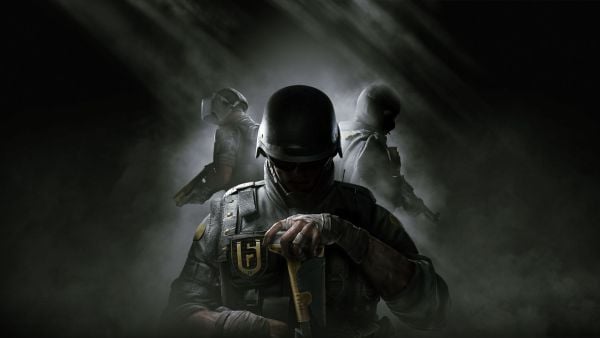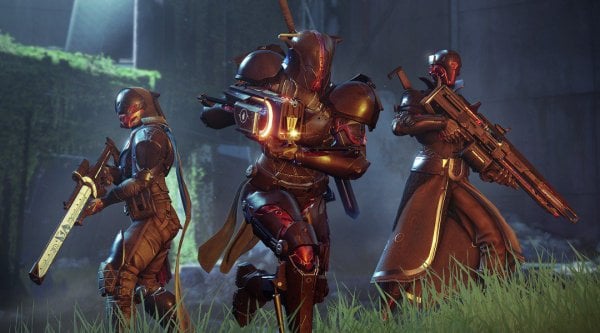In the current landscape of video games, there is no guarantee that you’ll be able to stand out or succeed upon release, even as a AAA title. Just like a lot of things in life though, games and their revenue models can now prosper in the long-term, committing to the “it’s a marathon, not a sprint” philosophy.
Here are six games that did even better after their initial release.
Games That Did Even Better After Their Initial Release
Fortnite

Fornite started out as an early access title that merged the concept of building with tower defense and shooting mechanics. Also, while you could play with friends, the focus was entirely PvE, as you worked together to fight off hordes of enemies.
The introduction of PvP is where Epic Games struck gold, fundamentally changing the layout of the game along with it. With a little inspiration from PlayerUnknown’s Battlegrounds’ success, Fortnite added a new mode alongside its single-player, titled Fortnite Battle Royale.
Fortnite Battle Royale was far more accessible than other games in the genre since it was free-to-play and rounds were also much quicker, allowing players to load and get in multiple matches in quick succession.
But Fortnite’s huge turnaround wasn’t simply something that happened because it now featured a Battle Royale mode. Instead, its continued post-release success was largely thanks to consistent updates to the game keeping things fresh.
Few free-to-play games put in the amount of effort Epic does when it comes to extra content in Fortnite. Be it customization, new dance emotes, or pop culture-themed events, this game’s comeback and continued rise comes from its ability to adapt.
Games That Did Even Better After Their Initial Release
The Elder Scrolls Online

Unlike most games in the Elder Scrolls series, The Elder Scrolls Online was met with a tepid reaction when it was announced. A mandatory monthly subscription model wasn’t very appealing to gamers in 2014, as the vast majority of games – even on PC – had long since abandoned the layout in favor of season passes and DLC.
Couple this premium with bugs and a small scope in comparison to other MMORPG games and it’s no surprise that TESO didn’t do well upon release. It was back to the drawing board for Bethesda, as they had to come up with some new ideas to turn around the game.
The changes started by implementing Tamriel Unlimited, an update that ditched the necessity to have a subscription to play Elder Scrolls Online. Instead, players could now purchase the game alone and also have access to an additive feature called ESO plus.
ESO plus granted access to all current and future DLC, as well as in-game perks and multipliers for as long as the subscription was active. That DLC opened up the world immensely, adding multiple locations, stories, and guilds, all of which helped give the setting that missing Elder Scrolls ambiance.
Games That Did Even Better After Their Initial Release
Final Fantasy XIV

Anticipation puts a lot of pressure on a game, especially when it is living up to the reputation of a storied franchise. So, when Final Fantasy XIV finally released after over five years of development in 2010, critics and fans alike were baffled with the end product.
The Square Enix MMORPG was a broken mess at launch, as interface and performance issues made the title extremely unattractive to most player. As a result of this, Naoki Yoshida, Hiroshi Takai, and Akihiko Matsui were brought on to try and help put out the fire.
While it may have taken a few patches to implement, Yoshida, Takai, and Matsui did a masterful job righting the ship, as various graphical and gameplay improvements were made. Some of the biggest changes came in the form of a new battle system, significant customization options, and a handful more dungeons and bosses for good measure.
The most important addition to the game didn’t even take place inside of it though, as Yoshida opened up communication by creating the Final Fantasy XIV forums. Not only were players able to give feedback and suggestions, but these message boards also served to build a community around the game.
In 2013, out of the ashes of the original, Final Fantasy XIV: A Realm Reborn rose to the top of the MMORPG ranks, giving fans exactly what they wanted from the get go. Alongside rave reviews and a spot in many “Game of the Year” lists, the soft relaunch saw a significant improvement in its player base.
Now it’s one of the most popular MMORPGs around, and will be enjoying the launch of its third major expansion this summer.
Games That Did Even Better After Their Initial Release
Warframe

When Warframe released in March 2013, it put up respectable numbers for a new IP, especially considering the free-to-play market wasn’t as openly accepted as it is currently. According to Steam Charts, the third-person shooter averaged approximately 12,329 users with a peak player base of 21,157 at one time in its second month.
As time went on, and developer Digital Extremes found itself turning a profit, Warframe pushed innovative content to help solve the negative aspects of the game. The biggest update came in the form of a new movement system, Parkour 2.0, that drastically changed the flow of the game, making it feel more challenging and fluid.
Over the next few years, Digital Extremes continued to release new features and expansions, tweaking things based on the community’s feedback. Five expansions and a Nintendo Switch port later, and Warframe is even more popular now than it was when it released.
According to Steam Charts, Warframe had an average of 61,486 users and a peak of 131,766 players at once this past November. With over five times the average users and peak players, it’s safe to say that this game has improved considerably.
Games That Did Even Better After Their Initial Release
Rainbow Six Siege

In recent years, Ubisoft has been known to rally back from rough releases especially in regards to multiplayer content for its games. Titles like The Division and For Honor stumbled out of the gate with their PvP only focuses, as each launched with notable issues in regards to their gameplays and structures.
While it took a while, each game earned its players trust back by implementing updates like Conflict and Marching Fire respectively.
No titles turnaround is quite as astounding as Rainbow Six Siege though, as this competitive shooter went from looking, and playing, like a PS3 game to one of the most played multiplayer games on the market today.
Just like the games mentioned above, Ubisoft didn’t concede when they faced criticism for Siege upon release. Instead, they once again leaned into the “games as a service” approach in order to provide long-term support and offer plenty of post-release content.
While changes weren’t all introduced immediately, this model showed noticeable dividends over time, as graphics improved significantly and new operators and maps were introduced frequently. More importantly, all of the existing content received updates according to player feedback and user data.
Nerfs and buffs were added often, as balancing updates made it so that certain characters weren’t over or under powered. Blitz spamming you with his shield’s flashbang? Well, he gets a shield flash range reduction from eight meters to five meters and one less charge. This is just one of the handful of helpful updates Ubisoft has put into place throughout the four years since the game released.
As a result of these constant updates, the player base more than doubled since 2015, as the number of daily active users increased 40% in 2016 as of the Skull Rain update. That success has continued on into 2019 as well, as Rainbow Six Siege is averaging 73,289 players daily, a far cry from the 10,000 or so average from launch.
Games That Did Even Better After Their Initial Release
Destiny 2

Following the mistakes of the original, it was clear that Bungie wanted to avoid a repeat for the second installment in the Destiny franchise. As such, they brought over many of the features that fans loved about the first game – gameplay, raids, clans, PvP – and expanded upon the narrative by adding robust plot lines and a fleshed out antagonist for Destiny 2.
Thanks to the combination of old and new features, Destiny 2 released in late 2017 to praise from critics and fans alike. However, the post-launch support wasn’t up to snuff and fans grew antsy about the game’s future after expansions, Curse of Osiris and Warmind, failed to meet fan expectations.
It wasn’t until the third DLC, Forsaken, that significant changes were implemented. Just like the Taken King expansion added a lot for the first title, Forsaken brought a riveting new main story, an awesome new mode in Gambit, a PvPvE competition against another team of Guardians, and plenty of other PvP and PvE content that gave out satisfying new loot.
These new missions, raids, and equipment resulted in a substantial player count increase alongside it.
According to the Destiny Tracker, Forsaken’s release tripled the player count for Destiny 2, as the new DLC saw 1.3 million Crucible players and 2.6 million PvE players. Just a few weeks earlier, the tracker reported 462,000 Crucible players and 767,000 PvE players.
Destiny 2 is still going strong in 2019, averaging 411,300 crucible players and 483,600 PvE players as of yesterday, proving that learning from your mistakes can result in success.
